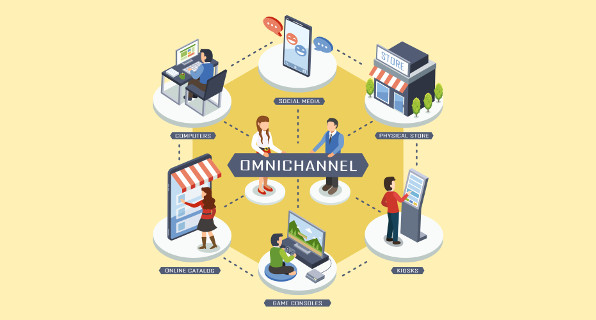Most people today love shopping online. It’s no surprise, as most worldwide consumers are now Millennials and Gen Z shoppers. From weekly groceries to clothing to cars, consumers can purchase virtually anything they want with a few taps of their fingers. eCommerce is behind this rise in flexibility and convenience.
eCommerce marketing experts like those at Mitto estimate that eCommerce sales in the United States will exceed $1 trillion for the first time this year. Mobile purchases account for an estimated 73% of all eCommerce sales, meaning the future of internet-based shopping is evolving ever further.
Roughly $3 out of every $4 spent on online purchases is made via a mobile device, giving rise to “mCommerce.” Gone are the days of perching in front of the computer to buy things, and here to stay is purchasing things with the ease of a cell phone.
mCommerce, it seems, will be the future of eCommerce. The shift from in-store shopping to online and mobile purchasing shouldn’t surprise. With the average person spending up to six hours on their phone per day, our realities have become digitized. And with about two-thirds of the world population being mobile users, this behavior shows no signs of slowing down anytime soon.
mCommerce is on the rise, and the only way for brands to remain successful in its wake is to adopt an omnichannel communications strategy. Meeting the consumer where the consumer spends their time should be a priority for businesses.
Why mCommerce Is Good For Consumers
Smartphones have surpassed the luxury signifier and are now necessary for most people. Because of the growing reliance on smartphone technology, mobile devices have become the most preferred channel for online shopping.
This is typically a benefit for both brands and customers alike, though it isn’t an easy adjustment. Companies like Mitto exist just for that reason – to help brands navigate their transition into mCommerce. Mitto’s Co-Founder Ilja Gorelik recently spoke about Mitto’s mCommerce approach, which helps both consumers and brands:
“Our AI routing platform automatically adjusts the optimal ratio between quality and cost. It constantly improves with new inputs from our Real-Time Monitoring system that sends test SMS to a network of mobile devices to simulate the best routes and delivery rates in real-life scenarios. By doing this, we can reach and change a route before customer engagement can be affected. AI powers all of this.”
Social media giants have primarily embraced the mobile commerce trend. Platforms like Instagram and Facebook have all introduced “buy buttons,” allowing consumers to effortlessly make purchases without leaving their preferred platform. mCommerce AI is what makes this happen. Shoppers can now make purchases through social media messages and receive 24/7 support from their favorite brands at every stage of their buying journey.
Furthermore, payment providers and banks have caught on to the fact that customers are inseparable from their phones. Many banks now offer consumers the ability to make transactions right on their mobile screens. And cashless payments are now offered by PayPal, Apple, Amazon, Google, and others.
To avoid being swallowed by obsolescence, brands must pivot to mCommerce. How can businesses benefit from doing so?
The Benefits of mCommerce
Mobile commerce offers numerous benefits for both brands and consumers. To start, mCommerce offers a wider potential audience for brands. Additionally, mCommerce allows brands to foster more connective relationships with their customers, boosting customer retention. With conversational commerce through messaging apps and chatbots, businesses can provide continuous support 24/7.
A customer’s experience can make or break their loyalty to a brand. With omnichannel messaging strategies, brands create a cohesive experience across all platforms, including mobile. This seamless experience enhances the user experience and solidifies brand loyalty. mCommerce also paves the way for diverse payment methods. Whether customers prefer PayPal, crypto, or conventional credit cards, shoppers are always in the driver’s seat, and abandoned shopping cart instances are mitigated.
Mobile commerce will only take a greater hold on society as the decade advances. According to Gorelik, mCommerce is not a side effect of the pandemic that will simply vanish. He said of the matter,
“Over the past year-plus, businesses have been forced to invest resources into their digital offerings and communications, and most have been quite successful in doing so. They were forced to be creative, experimental, flexible, agile, and better understand their customers’ habits and behaviors when face-to-face interaction wasn’t possible. These trends were accelerated by the pandemic-induced shift online but should not be relegated solely to this past year. Businesses should continue these practices moving forward, and I fully expect them to give all signs indicating that many of these behavioral shifts are permanent.”
All brands must embrace this shift or risk falling to the wayside. By providing shoppers with a seamless experience across all mobile platforms, brands can deepen trust, tap into a global audience, and achieve their desired growth.
About Mitto:
Commerce is changing, and so should business approaches to commerce. Mitto, co-founded by Ilja Gorelik and Andrea Giacomini in 2013, is a Swiss-based Omnichannel and digital communication solution provider. Their team around the world is committed to helping brands bridge the gaps between themselves and their customers starting with great communication experiences.







